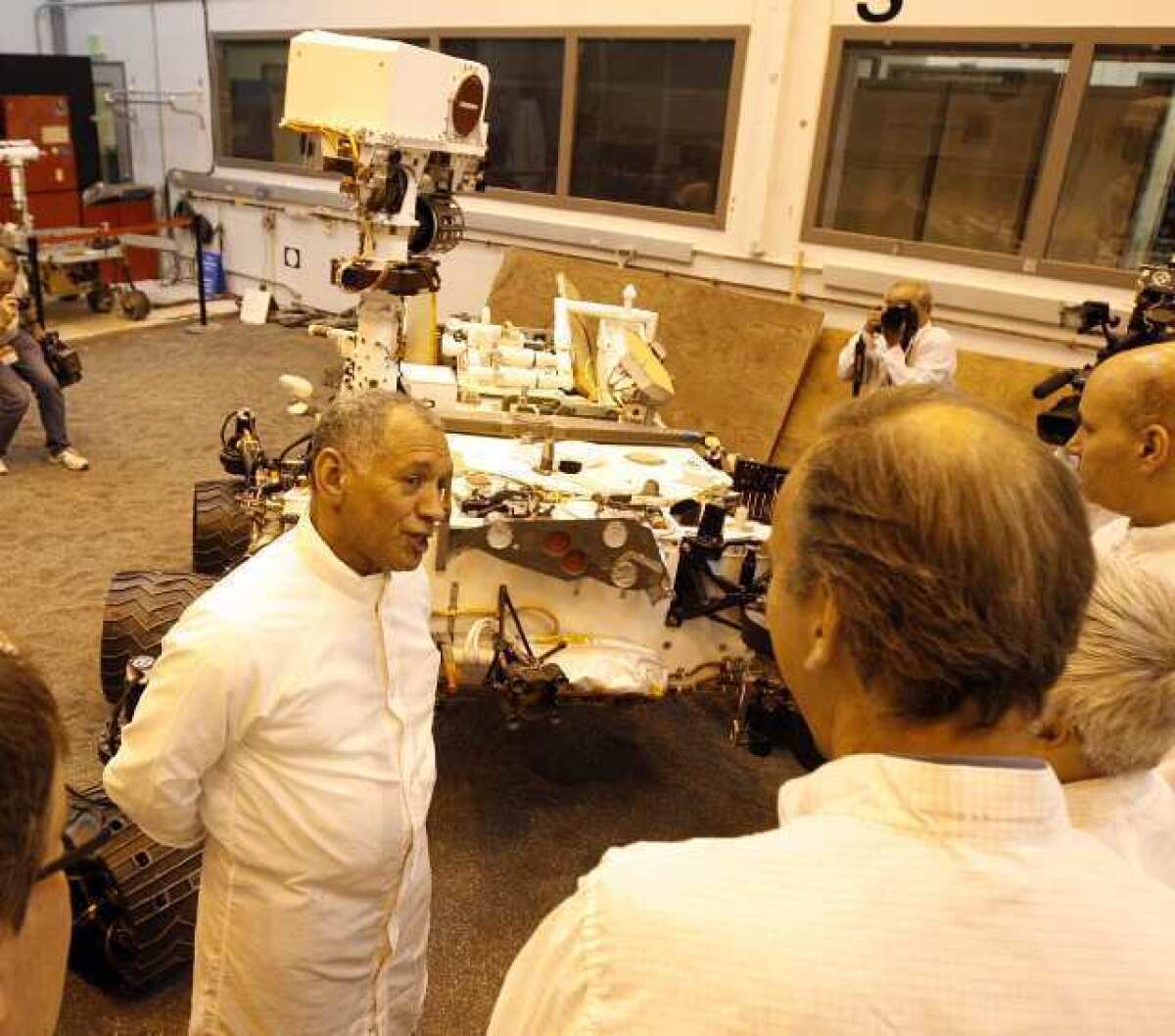Congress looks at boosting JPL budget

Jet Propulsion Laboratory’s missions to Mars have gotten a boost from congressional leaders, who this week found up to $100 million more for NASA’s planetary science program.
The White House’s initial proposal for the 2013 NASA budget would have cut planetary science funding by $300 million, scrapping two future Mars missions and threatening hundreds of jobs at JPL.
A new version of the NASA budget that passed the House Appropriations Committee on Thursday restores $88 million of the planetary science cuts, said Rep. Adam Schiff (D-Burbank). A companion proposal that recently cleared the Senate Appropriations Committee would restore a total of $100 million.
Both proposals will go to full floor votes in the coming weeks before differences between the House and Senate bills are reconciled by a conference committee.
“I’m hoping we’ll get a number better than either when we go to conference,” said Schiff, who will be a member of that conference committee. “We need to increase the funding further to maintain the kind of Mars program we’d like to see.”
During a March 21 hearing of the House subcommittee overseeing the NASA budget, Schiff grilled NASA Administrator Charles Bolden over proposed cuts and accused the agency of “cannibalizing the Mars program” to support other NASA priorities.
The proposed cuts, Schiff and others have said, could spur a “brain drain” that would limit NASA’s planetary science capabilities for years to come.
The House proposal would not increase the overall NASA budget of $17.7 billion, but would tamp down a major increase in funding for NASA’s commercial space flight program.
Schiff said Thursday that it wasn’t clear how a partially restored planetary science budget would affect JPL.
“It’s a question of how many Mars missions you can launch in what time frame. The more funding we get, the more opportunities we can take to explore Mars,” said Schiff.
In addition to Mars work, increased planetary science budgets could also allow for a JPL-led mission to Saturn’s Europa moon, where scientists would look for evidence of life on other worlds.